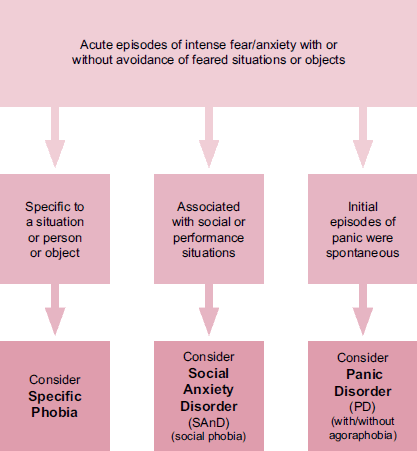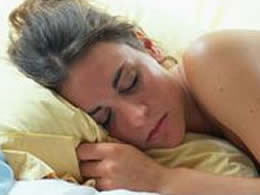Now, discover all about the different types of anxiety and disorders. Classification of anxiety disorders. All types of anxiety. Anxiety disorders.
Types of anxiety: 6 types of anxiety
Anxiety disorders are the most common mental health problems in the United States. There are several types of anxiety disorders including obsessive-compulsive disorder, post-traumatic stress disorder, social phobia, generalized anxiety disorder, and panic disorder.
Definition of the 6 types of anxiety
There are several types of anxiety disorders, and each has its own set of common symptoms. This is the short description of anxiety disorders as defined by DSM-IV.
Generalized anxiety disorder (GAD)
The main features of generalized anxiety disorder are excessive anxiety and worry. The patients suffer from somatic anxiety symptoms as well as from restlessness, irritability, difficulty concentrating, muscle tension, sleep disturbances and being easily fatigued. Patient may express constant worry that the patient or a relative will shortly become ill or have an accident.
Panic disorder (PD)
Panic disorder is characterized by recurrent panic attacks. Panic attacks are discrete periods of intense fear or discomfort, accompanied by at least four somatic and psychic symptoms (palpitations, sweating, trembling, dyspnoea, choking sensations, chest pain, nausea, abdominal distress, dizziness, feeling of unreality, fear of dying, etc.). A panic attack reaches a peak within 10 min and lasts 30 – 45min on average. Usually, the patient is afraid that he has a serious medical condition such as myocardial infarction.
Agoraphobia
About two-thirds of all patients with panic disorder suffer from agoraphobia, which is defined as fear in places or situations from which escape might be difficult or in which help may not be available in the event of having an unexpected panic attack. These situations include being in a crowd or standing in a line, being outside the home alone, or traveling in a bus, train or automobile. These situations are avoided or endured with marked distress.
Phobie simple ou spécifique
Phobie simple ou spécifique irraisonné ou bien excessif, déclenchée par la présence ou l’anticipation de la confrontation à un objet ou une situation spécifique (par exemple prendre l’avion, les hauteurs, les animaux, avoir une injection, voir du sang). Il existe de nombreuses phobies spécifiques dont certaines peuvent devenir très invalidantes selon le contexte familial, social ou professionnel : ascenseur, conduite automobile, animaux, transports, sang et blessures, piqûres, etc.
Specific phobia
Specific phobia is characterized by excessive or unreasonable fear of single objects or situations (e.g., flying, heights, animals, seeing blood, etc.).
Social phobia (social anxiety disorder; SAD)
This disorder is characterized by marked, persistent, and unreasonable fear of being observed or evaluated negatively by others in social performance or interaction situations and is associated with somatic and cognitive symptoms. The feared situations are avoided or else are endured with intense anxiety or distress. These situations include fear of speaking in public, speaking to unfamiliar people or being exposed to possible scrutiny by others.
Obsessive-compulsive disorder (OCD>
OCD is characterized by recurrent obsessions or compulsions, or both, that cause impairment in terms of distress, time, or interference with functioning. Concerns involving contamination harm, hoarding, and sexual, somatic and religious preoccupations are the most common obsessions. Compulsions include washing, checking, repeating, ordering, counting, hoarding and touching (rare).
Post-traumatic stress disorder (PTSD)
PTSD develops after a terrifying ordeal that involved physical harm or the threat of physical harm. The person who develops PTSD may have been the one who was harmed, the harm may have happened to a loved one, or the person may have witnessed a harmful event that happened to loved ones or strangers. The condition is characterized by recurrent and intrusive distressing recollections of the event, nightmares, a sense of reliving the experience with illusions, hallucinations, or dissociative flashback episodes, intense psychological or physiological distress at exposure to cues that resemble the traumatic event, avoidance of stimuli associated with the trauma, inability to recall important aspects of the trauma, loss of interest, estrangement from others, sleep disturbances, irritability, difficulty concentrating, hypervigilance, and exaggerated startle response. The full symptom picture must be present for more than1 month.
Anxiety types: What's your type of anxiety?




